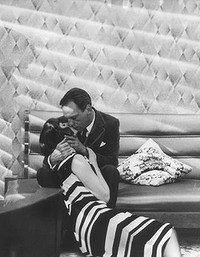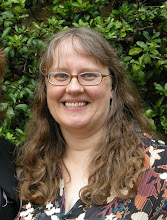The Farnes are a group of small islands off the coast of north Northumberland. There are 28 islands and about 16 can be viewed at high tide. They are in the care of the National Trust and are well known as being used by St Cuthbert for meditation in the 7th century.
Longstone lighthouse on one of the Staple islands was home to local heroine Grace Darling. She was the daughter of the lighthousekeeper at Longstone and helped saved 7 people from a shipwreck in the early nineteenth century. She died from tuberculosis only 4 years later aged 27 and is buried at nearby Bamburgh.
The Farnes can be seen from the coast near Bamburgh and boat crossings leave from nearby Seahouses harbour.
Despite being born in Northumberland I had never visited the Farne islands until this week. My sister Ann is a keen birder and had been to the Farnes for the first time last year and was very keen for me to go with her.
Our boat was the 'Glad Tidings' and we left Seahouses harbour at 9.30 am on a beautiful sunny day which considering the almost autumnal weather we've had in June was a lovely surprise. The boat holds 65 people and was pretty packed. Most of the passengers were photographers and there was some serious kit on display!
The first thing of note that we saw was some grey seals on the rocks approaching Staple island. There is a colony of 3-4000 seals on the Farne islands and around 1000 pups are born each autumn. The Farnes is one of the best places in the UK to see these seals and underwater diving trips are available.
The main reason why most people visit the Farnes during early summer is to see the colonies of nesting seabirds which come to the islands to breed each year. There are thousands of puffins, kittiwakes, razorbills, guillemots and shags.
Our first stop was on Staple island. The red and white Longstone lighthouse is visible from here. The lichen covered rocks make up the bulk of the terrain and every inch of the cliffs are colonised by the birds.
There are no terns on Staple island - they were to come on Inner Farne. We saw thousands of guillemots and kittiwakes including numerous chicks. The shag young were almost as big as their parents. Puffin burrows were everywhere.
After a trip around Staple island to see the impressive Pinnacle rock stacks we then headed for Inner Farne which is the largest island. There is a chapel, information centre, Pele tower and lighthouse with cottage. Inner Farne also has more vegetation, including docks and bladder campion.
The highlight of the trip for me were the puffins. You couldn't see these birds other than here during the breeding season as they simply don't come onto land. They seemed unfazed by all the visitors and just went about their business going back and forward collecting sand eels which they take back to the burrows to feed their chicks.
The shags similarly were nesting very close to where people were walking by. The terns on the other hand were very aggressive and a hat was essential! The birds had eggs and chicks very close to the boardwalk path and were dive-bombing visitors constantly.
We decided to stay on Inner Farne for an extra hour and got back to Seahouses at 5 pm. It really was an unforgettable day!
 |
| Inner Farne from Bamburgh beach |
The Farnes can be seen from the coast near Bamburgh and boat crossings leave from nearby Seahouses harbour.
Despite being born in Northumberland I had never visited the Farne islands until this week. My sister Ann is a keen birder and had been to the Farnes for the first time last year and was very keen for me to go with her.
Our boat was the 'Glad Tidings' and we left Seahouses harbour at 9.30 am on a beautiful sunny day which considering the almost autumnal weather we've had in June was a lovely surprise. The boat holds 65 people and was pretty packed. Most of the passengers were photographers and there was some serious kit on display!
 |
| Grey seals |
The main reason why most people visit the Farnes during early summer is to see the colonies of nesting seabirds which come to the islands to breed each year. There are thousands of puffins, kittiwakes, razorbills, guillemots and shags.
 |
| Longstone lighthouse from Staple Island |
There are no terns on Staple island - they were to come on Inner Farne. We saw thousands of guillemots and kittiwakes including numerous chicks. The shag young were almost as big as their parents. Puffin burrows were everywhere.
After a trip around Staple island to see the impressive Pinnacle rock stacks we then headed for Inner Farne which is the largest island. There is a chapel, information centre, Pele tower and lighthouse with cottage. Inner Farne also has more vegetation, including docks and bladder campion.
 |
| Inner Farne lighthouse with flowering dock and terns |
The highlight of the trip for me were the puffins. You couldn't see these birds other than here during the breeding season as they simply don't come onto land. They seemed unfazed by all the visitors and just went about their business going back and forward collecting sand eels which they take back to the burrows to feed their chicks.
 | |||
| Puffin |
The shags similarly were nesting very close to where people were walking by. The terns on the other hand were very aggressive and a hat was essential! The birds had eggs and chicks very close to the boardwalk path and were dive-bombing visitors constantly.
We decided to stay on Inner Farne for an extra hour and got back to Seahouses at 5 pm. It really was an unforgettable day!






